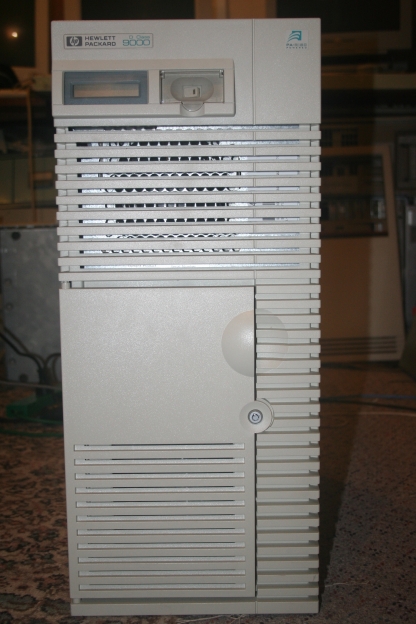
CPU: up to two 180MHz PA8000 CPUs
Video: unknown
Min Ram: 64MB (single CPU), 128MB (dual CPU)
chassis: tower
bus: 5* EISA/Turbo HSC, 3* EISA
Menu:

The D class HP9000 D380 server comes in a fairly large tower case with five hotswap disk bays, two 5.25" removable media bays and a single 3.5" removable media bay. A two line LCD screen is provided on the front of the system unit beside the power switch. The D380 is available with either one or two 180MHz PA8000 CPUs. Rackmount versions of the D class are known as the R class (The R380 is the rackmount version of the D380).

The power switch on the front (to the right of the LCD, under the flap) is somewhat strange as it behaves more like the power button on an modern PC. Switching it to the ON position causes the machine to turn on as expected. If HP-UX is running, about five seconds after being switched to OFF the operating system will begin to shutdown and then the machine turns off (much like pushing the power button on a modern PC while windows is running causes it to shutdown rather than turn off immediately). The shutdown is actually delayed by five seconds however - This gives you five seconds to switch it back to ON to cancel the shutdown if it was accidental. If the operating system has crashed switching the power switch to OFF will do nothing (you must press the TOC button on the back instead).
The system appears to have room for eight EISA expansion cards. Five of the EISA slots appear to have an additional black centronics-type connector behind it (image) which is labeled as being the "Turbo HSC" bus. HSC appears to be a variant of the GSC bus used in other HP 9000 systems.
I have only one of these machines and it has been given the rather creative name "d380". More details on it as well as what its configuration looks like can be found at its own page rather than messing up this one like it used to.
More detailed and higher resolution images of the d380 can be found in its Image Gallery.